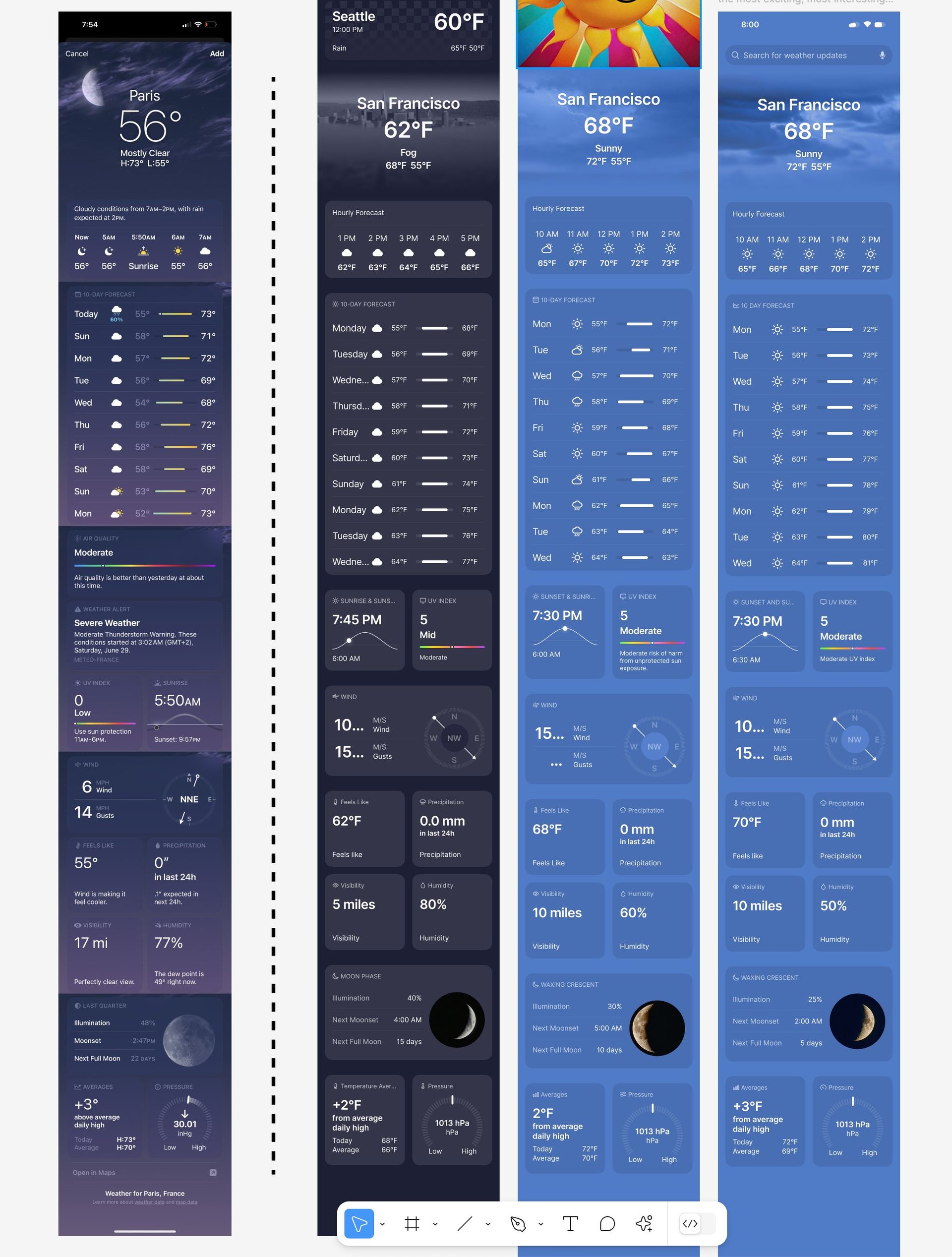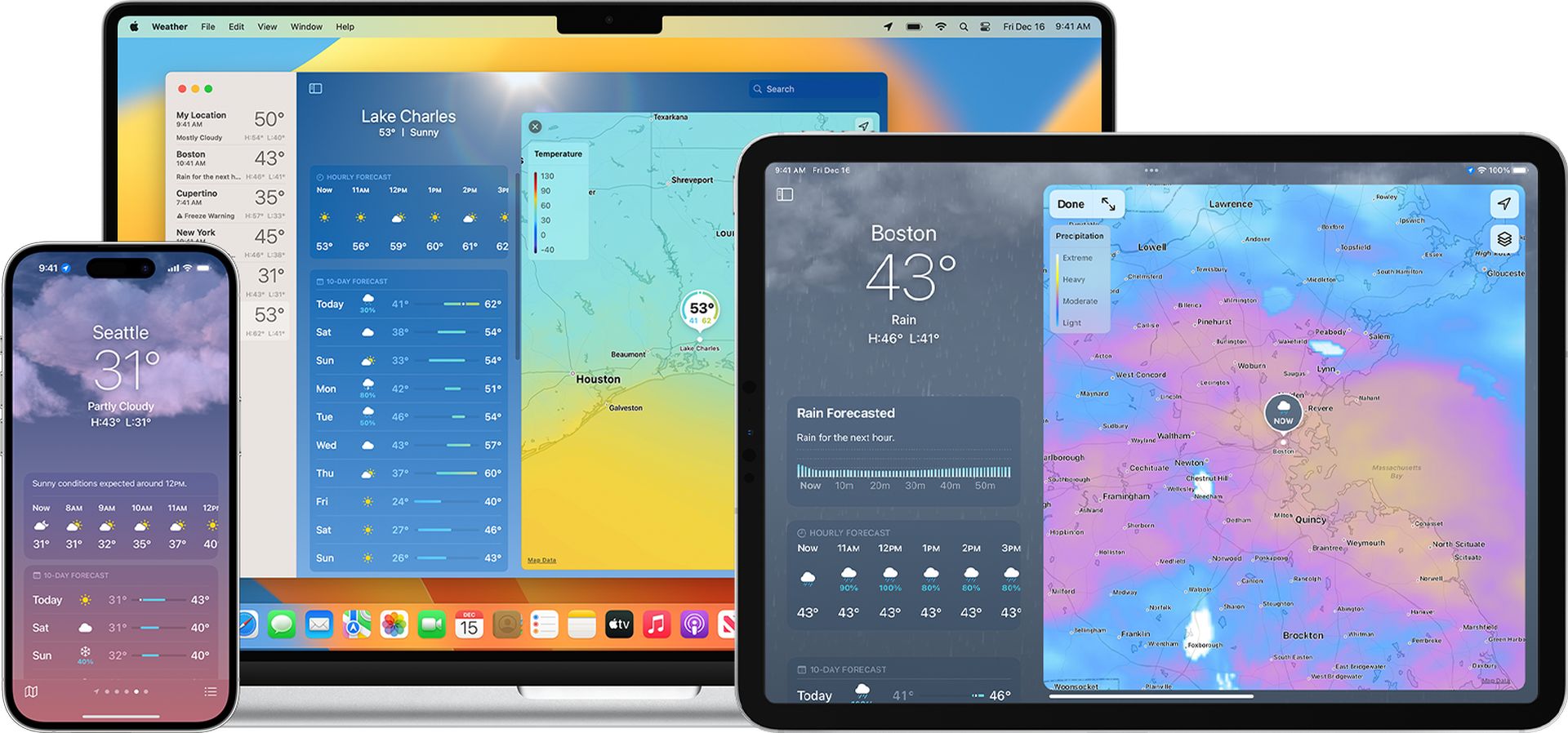The Figma AI design has recently become the center of controversy. The company temporarily disabled the “Make a Design” feature after allegations that the tool copied designs from Apple’s Weather app.
Andy Allen, the founder of NotBoring Software, uncovered the similarity, noting that Figma’s AI model produced designs similar to those of Apple’s Weather app.
Immediate actions were taken regarding the Figma AI design
After discovering the problem, Andy Allen took to social media to accuse Figma of heavily training its AI on existing apps. Indeed, when we checked the images, we saw that they resembled Apple’s Weather app. You can see the images below:
Figma AI looks rather heavily trained on existing apps.
This is a "weather app" using the new Make Designs feature and the results are basically Apple's Weather app (left). Tried three times, same results. https://t.co/Ij20OpPCer pic.twitter.com/psFTV6daVD
— Andy Allen (@asallen) July 1, 2024
However, Figma CEO Dylan Field denied the allegations, stating that the AI was not trained on existing app designs, community files, or Figma content. Despite the denials, the AI tool’s training processes seem to have caused great concern.
Field explained that the “Design Build” feature aims to create user interface layouts and components based on text prompts, allowing developers to sketch and explore various design directions quickly. The tool was expected to speed up the design process by providing a preliminary sketch that developers could refine. However, Allen’s discovery revealed a critical flaw in AI’s underlying design systems.

Understanding the capacity and functionality to design
Introduced at Figma’s Config conference, Figma AI design’s “Make Design” feature was introduced as a tool to facilitate the design process. Users could enter textual descriptions of their needs, and the AI would create the relevant layouts. The aim was to save time and facilitate rapid prototyping and iteration.
The controversy over the blatant copying of Apple’s Weather app brought to light significant issues with AI’s design education. Field acknowledged that AI’s output variability was too low, leading to designs that were too similar to existing applications. He took responsibility for oversight and admitted that quality assurance (QA) processes were inadequate before the feature’s release.
Community reaction and Figma’s response
The revelation that the Figma AI design could potentially copy existing app designs caused considerable alarm in the design community. Some concerns using AI-generated layouts could inadvertently lead to legal issues due to similarities with other proprietary designs. Allen warned designers to carefully review and modify AI-generated designs to avoid potential copyright infringement.
Given these concerns, Figma decided to disable the “Make Design” feature until the team was confident that the AI’s output was unique and reliable. Field emphasized the need for a more rigorous quality control process and acknowledged that rushing to release new features jeopardized the necessary quality checks. He reassured users that the feature would remain disabled until the team was confident in the AI’s performance and accuracy.

Moving forward cautiously
The temporary suspension of the “Design Build” feature in Figma AI design highlights the challenges and responsibilities of integrating AI into creative processes. While the feature was intended to increase efficiency and creativity, the implementation underscored the importance of thorough testing and validation.
Figma’s quick response to resolve the issue demonstrates its commitment to maintaining trust and integrity with its user base. By recognizing the issue and taking steps to fix it, Figma aims to maintain the quality and reliability of its tools. The company’s approach emphasizes the need for careful evaluation and robust QA processes when developing and using AI-powered design tools.
As Figma improves its ‘Make Design’ feature, the design community will closely monitor the company’s progress. The results will likely influence how AI-powered design tools are perceived and used in the industry. For now, Figma’s priority is to ensure that AI design tools are innovative, reliable, and aligned with the high standards its users expect.
Featured image credit: Esteban Benites / Unsplash





